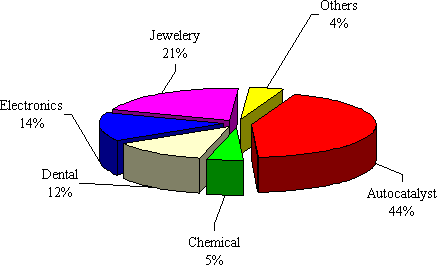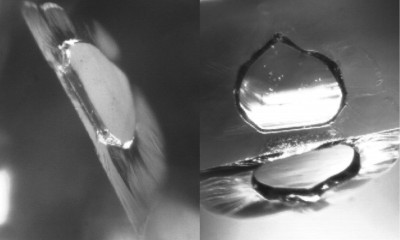WEBSITE HIGHLIGHTS: WHAT IS A DIAMOND
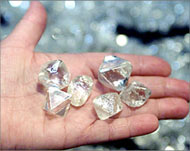 We receive numerous questions about how a diamond is formed deep within the earth and how it makes its way to the surface of the earth. We also get questions about a diamond’s physical properties. These questions come from diamond jewelry shoppers and students doing school projects. To help answer some of those questions, our web site includes a diamonds education page entitled “What Is A Diamond.” You might want to read that page in case someone asks you that question.
We receive numerous questions about how a diamond is formed deep within the earth and how it makes its way to the surface of the earth. We also get questions about a diamond’s physical properties. These questions come from diamond jewelry shoppers and students doing school projects. To help answer some of those questions, our web site includes a diamonds education page entitled “What Is A Diamond.” You might want to read that page in case someone asks you that question.
Learn more about What Is A Diamond…
DIAMOND SHOPPER MISTAKES: FIND EXPERTS, NOT OPINIONS
Diamond shoppers need to be aware that there are very few absolutes when it comes to judging diamond quality, especially when it comes to cut parameters. This is particularly true concerning what constitutes of fancy shaped diamonds. As a result, shoppers should carefully assess the opinions and advice they receive to ensure they are getting the best guidance possible.
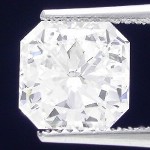 We recently ordered in a square radiant for a client with depth of 60.6% and table of 65%, which was one of the best cut square radiants we have seen. We inspected it, found it to be gorgeous, and sent our client photos. He emailed back saying he was not interested in that diamond (even though he was the one who picked it out and ordered it) because he had talked to several people in jewelry stores and they told him it was too shallow.
We recently ordered in a square radiant for a client with depth of 60.6% and table of 65%, which was one of the best cut square radiants we have seen. We inspected it, found it to be gorgeous, and sent our client photos. He emailed back saying he was not interested in that diamond (even though he was the one who picked it out and ordered it) because he had talked to several people in jewelry stores and they told him it was too shallow.
I provided several sources that are considered industry experts on radiant cut grade showing that the specifications were just what you want for the best cut square radiant, especially the depth percentage, and fell within their “ideal” cut grades. The bottom line is that our client chose to believe some folks in a jewelry store and did not purchase from us. We suspect he purchased from the folks in the jewelry store who advised him against the diamond we found for him.
The reality of the situation is our client passed up getting one of the best cut radiants in the country because of advice he received from someone in a jewelry store wanting to sell a diamond they had in inventory. Since it is so hard to find exceptionally well cut square radiants, the jeweler did not know either what constituted great cut or was simply trying to steer the shopper towards his diamond. In this day of abundant information online about diamonds and diamond cut, diamond shoppers need to seek expert advice and not necessarily biased opinions.
If our client had applied some logic, he would have realized that we have no incentive other than to find the best diamonds in the country for our clients. We do not own inventory so we do not have to make up rules about what constitutes great cut, we research the industry experts for a consensus opinion on what is best for our clients.
PALLADIUM USE FOR JEWELRY ON THE RISE
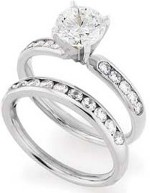 One of the stories emerging from the diamond and jewelry trade show in Las Vegas the first week in June, was an increasing awareness that Palladium is poised to be the significant metal in the jewelry industry.
One of the stories emerging from the diamond and jewelry trade show in Las Vegas the first week in June, was an increasing awareness that Palladium is poised to be the significant metal in the jewelry industry.
Palladium is a member of the platinum group metal (PGM) and has many of the properties of platinum (white metal, easy to work with, hypoallergenic) but has the added qualities of being more plentiful than platinum, less expensive than gold or platinum, and is very strong but lighter in weight than platinum. Palladium metal is currently trading at about one fourth the price of platinum.
Palladium has many non-jewelry uses and is used in gold, silver and copper alloys in dentistry. Alloys of palladium are also used for bearings, springs, and balance wheels in watches. Palladium is used as a catalyst in the manufacture of sulfuric acid. The automotive industry has used palladium in catalytic converters since 1974. When palladium is alloyed with 40% silver, it becomes much tougher and wear-resistant and is used in electrical contact materials. Palladium-silver diffusion membranes are used in the purification of hydrogen.
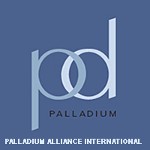 Platinum became a major factor in the jewelry industry due in large part to the marketing efforts of the platinum industry. Time will tell if the palladium industry including organizations like Palladium Alliance International (PAI) will be able to create the awareness and demand for palladium that platinum has achieved in recent years.
Platinum became a major factor in the jewelry industry due in large part to the marketing efforts of the platinum industry. Time will tell if the palladium industry including organizations like Palladium Alliance International (PAI) will be able to create the awareness and demand for palladium that platinum has achieved in recent years.
DUBAI DIAMOND EXCHANGE
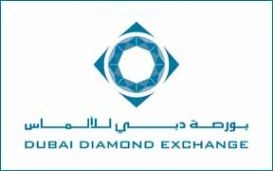 The United Arab Emirates (UAE) federal cabinet has decided that the Dubai Diamond Exchange will be the sole gateway for imports and exports of polished diamonds in the UAE. The Dubai Diamond Exchange, a unit of the Dubai Multi Commodities Centre, is already the single point of entry for rough diamonds since it implements what is called the Kimberly Process Certification Scheme in the UAE.
The United Arab Emirates (UAE) federal cabinet has decided that the Dubai Diamond Exchange will be the sole gateway for imports and exports of polished diamonds in the UAE. The Dubai Diamond Exchange, a unit of the Dubai Multi Commodities Centre, is already the single point of entry for rough diamonds since it implements what is called the Kimberly Process Certification Scheme in the UAE.
The Kimberly Process is a UN initiative meant to resolve conflict diamonds and comprises the issue of a certificate by the diamond office at the source to certify that diamonds have been mined under legitimate conditions. The Dubai Diamond Exchange was set up in 2002, joined the World Federation of Diamond Bourses in October 2004, and is one of more than 20 such exchanges around the world.
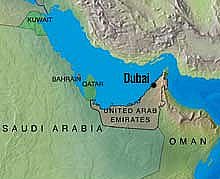 The UAE is one of the largest trading centers in the world for rough diamonds and the Gulf Cooperation Council (GCC) region that is comprised of Saudi Arabia Kuwait, Bahrain, Qatar, United Arab Emirates, and Oman. The GCC is now the third largest consumer of diamond jewellery in the world after the USA and Japan. The total trade in rough diamonds in Dubai jumped 46.25 per cent in 2005, to $3.734 billion, up from $2.553 billion in 2004. Dubai exported diamonds valued at $2.248 billion in 2005 while imports for the same period touched $1.484 billion.
The UAE is one of the largest trading centers in the world for rough diamonds and the Gulf Cooperation Council (GCC) region that is comprised of Saudi Arabia Kuwait, Bahrain, Qatar, United Arab Emirates, and Oman. The GCC is now the third largest consumer of diamond jewellery in the world after the USA and Japan. The total trade in rough diamonds in Dubai jumped 46.25 per cent in 2005, to $3.734 billion, up from $2.553 billion in 2004. Dubai exported diamonds valued at $2.248 billion in 2005 while imports for the same period touched $1.484 billion.
DIAMOND TRADE PREPARES FOR “BLOOD DIAMOND” FILM
 The film “Blood Diamond,” starring Leonardo DiCaprio, will be advertised in the fourth quarter of 2006. This will be a major movie release (scheduled December 16,2006) will widespread publicity highlighting the story of Conflict Diamonds. Since the fourth quarter also is the key to diamond and jewelry retail sales, the jewelry industry is preparing an awareness campaign to prepare retailers for questions that consumers might ask about conflict diamonds.
The film “Blood Diamond,” starring Leonardo DiCaprio, will be advertised in the fourth quarter of 2006. This will be a major movie release (scheduled December 16,2006) will widespread publicity highlighting the story of Conflict Diamonds. Since the fourth quarter also is the key to diamond and jewelry retail sales, the jewelry industry is preparing an awareness campaign to prepare retailers for questions that consumers might ask about conflict diamonds.
The United Nations adopted the Kimberley Process in 2003 with the cooperation of the diamond industry and representatives of 45 countries to reduce the illegal trade of diamonds, which financed terrible wars since 1999 in countries like Sierra Leon and the Congo. Current estimates are that the Kimberley Process has curbed the illegal trade of the world’s rough diamonds from 4 percent in 1999 to 0.2 percent today.
The concern of the diamond industry with the DiCaprio film is that while it probably presents an accurate portrayal of the terror in Sierra Leone in 1999, it does not address what the industry has done and continues to do with eliminating this situation.
Retailers are encouraged to convey the message that 99.8% of diamonds on the market are not “conflict diamonds” and that the diamond industry plays an important and positive role in the lives of industry related workers in many countries in Africa and around the world.
INCLUSIONS & BLEMISHES: SHIELD SHAPED CRYSTAL
Every once in awhile, we look under the microscope and find an inclusion that is simply fascinating. This was the case with this shield shaped crystal in the center of a radiant cut diamond. The three dimensional aspect of the diamond crystal that grew within the diamond is obvious in these photos. Notice what looks like a smooth surface on the crystal and feathery “halo” that radiates around the crystal.
In the right photo, you can see a reflection of the crystal in a nearby facet, which gives another perspective of this unique inclusion. While this inclusion was barely visible to the eye, it is an example of the beauty that becomes visible under the magnifying lens of a gemological microscope.
A crystal is a mineral crystal contained in some diamonds. When the crystal is totally enclosed within the stone, it is called an included crystal. Crystals can be almost any size, colored or colorless, and can occur alone or in groups. While there are over 24 identifiable mineral occurrences identified as crystal inclusions, most often the crystal inclusion is a diamond crystal, especially if the crystal appears white, dark or some shade of gray. You might hear people call crystals “bubbles”, but that term is incorrect for diamonds. Dark crystals are often called “carbon spots”, but that is another incorrect and misleading term. I will discuss these dark crystals in the next newsletter.
GIA TO START GRADING SYNTHETIC DIAMONDS
 The Gemological Institute of America (GIA) will begin issuing synthetic diamond grading reports this year for the first time. GIA says that with the growing number of gem-quality, laboratory-grown diamonds entering the marketplace, there is a need to distinguish them from natural diamonds for the consumer.
The Gemological Institute of America (GIA) will begin issuing synthetic diamond grading reports this year for the first time. GIA says that with the growing number of gem-quality, laboratory-grown diamonds entering the marketplace, there is a need to distinguish them from natural diamonds for the consumer.
GIA has created a new grading report format that is specific to synthetic diamonds. The new reports will provide a description of the synthetic, containing color, clarity, carat weight, and cut information when applicable.
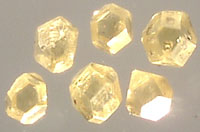 The design of the report will be markedly different from the current GIA Diamond Grading Reports for natural diamonds. A distinctive yellow color will immediately identify it as a synthetic diamond grading report.
The design of the report will be markedly different from the current GIA Diamond Grading Reports for natural diamonds. A distinctive yellow color will immediately identify it as a synthetic diamond grading report.
To further help the public and members of the industry to distinguish synthetics from natural diamonds, the GIA Laboratory will laser-inscribe the word “synthetic,” along with the GIA report number, on the girdle of every synthetic diamond it grades.
Tom Moses, senior vice president, GIA Laboratory and Research, noted that GIA’s research scientists have been studying synthetic diamonds for more than 30 years and have carefully monitored the new technologies that create these stones. “Once we start grading them,” he said, “we will be able to study a far greater number and variety of synthetic diamonds and we will report our findings as we proceed.”
GEMSTONES: PADPARADSCHA
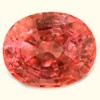 Padparadscha sapphires are the rarest of sapphires from the gem class termed corundum. One of the world’s most expensive gems, padparadscha (pronounced Pad-para-dscha) sapphires are mostly unknown to consumers because there are so few in circulation. Padparadscha sapphires have no rivals with no other gemstone species, since there is no other colored stone that compares to the striking beauty of this unique mix of pink and orange. These fancy sapphires are very beautiful and typically command a high price per-carat.
Padparadscha sapphires are the rarest of sapphires from the gem class termed corundum. One of the world’s most expensive gems, padparadscha (pronounced Pad-para-dscha) sapphires are mostly unknown to consumers because there are so few in circulation. Padparadscha sapphires have no rivals with no other gemstone species, since there is no other colored stone that compares to the striking beauty of this unique mix of pink and orange. These fancy sapphires are very beautiful and typically command a high price per-carat.
Salmon, sunsets, lotus flowers, and tropical fruits terms are used to describe natural padparadscha sapphires; the color range is a delicate combination of the two colors: pink and orange. Despite the varying color descriptions, the industry agrees that padparadscha sapphire colors are intensely saturated, and range from light to medium pinkish orange to orange-pink. Padparadscha is derived from the Sanskrit word padmaraga meaning “lotus flower”. The petals from the finest lotus blossoms are a harmonious blend of pink and orange.
Trace elements of iron and chromium cause the unique hues or the colored centers of padparadscha. Over time the accepted color range for padparadscha has changed; the term once described, ranges of color from yellowish orange to orangey red, with an assortment of tones and degrees of saturations. Today, a gem must fall into a narrower color range. Therefore, a reddish-orange or a reddish-brown colored sapphire should not be classified as a Padparadscha since a true Padparadscha is classified as specific mix of pink and orange.
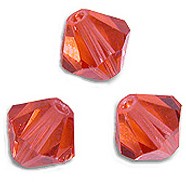 While few shoppers have seen true Padparadscha in person, many have seen crystal beads manufactured to look like Padparadscha. Companies like Swarovski Crystal use the Padparadscha name to describe the beads with the beautiful mix of pink and orange.
While few shoppers have seen true Padparadscha in person, many have seen crystal beads manufactured to look like Padparadscha. Companies like Swarovski Crystal use the Padparadscha name to describe the beads with the beautiful mix of pink and orange.
For thousands of years, padparadscha have been sifted from the river gravel of Sri Lanka, with the best natural specimens coming from Ceylon. Ceylon is the original locality for padparadscha; many purists today believe the term should be restricted only to stones from this area. Only in the recent few decades have other countries produced similar color tones associated with Ceylon Padparadscha. Madagascar is producing the majority of the stones available on the market. They are mostly more pink than orange (20-30% orange and 70-80% pink). These stones are classified “Padparadscha” but are normally sold at cost 20% less than the “Ceylon Padparadscha”. The Tanzania Tunduru district produces “Padparadscha-like” orange sapphires, of a reddish orange color with tones of brown and slight hints of pink. These sapphires although beautiful are usually not classified as “Padparadscha” because of the significant tones of red and brown.

